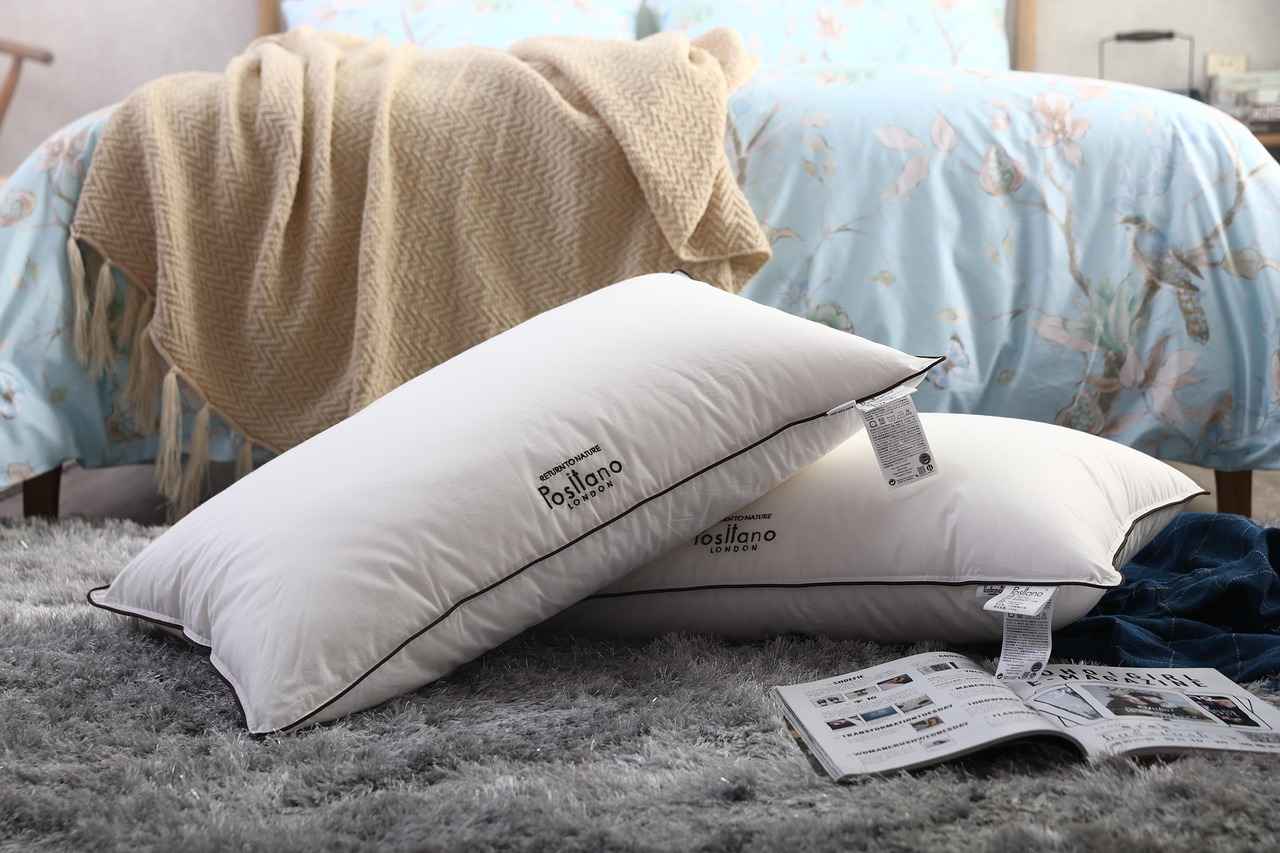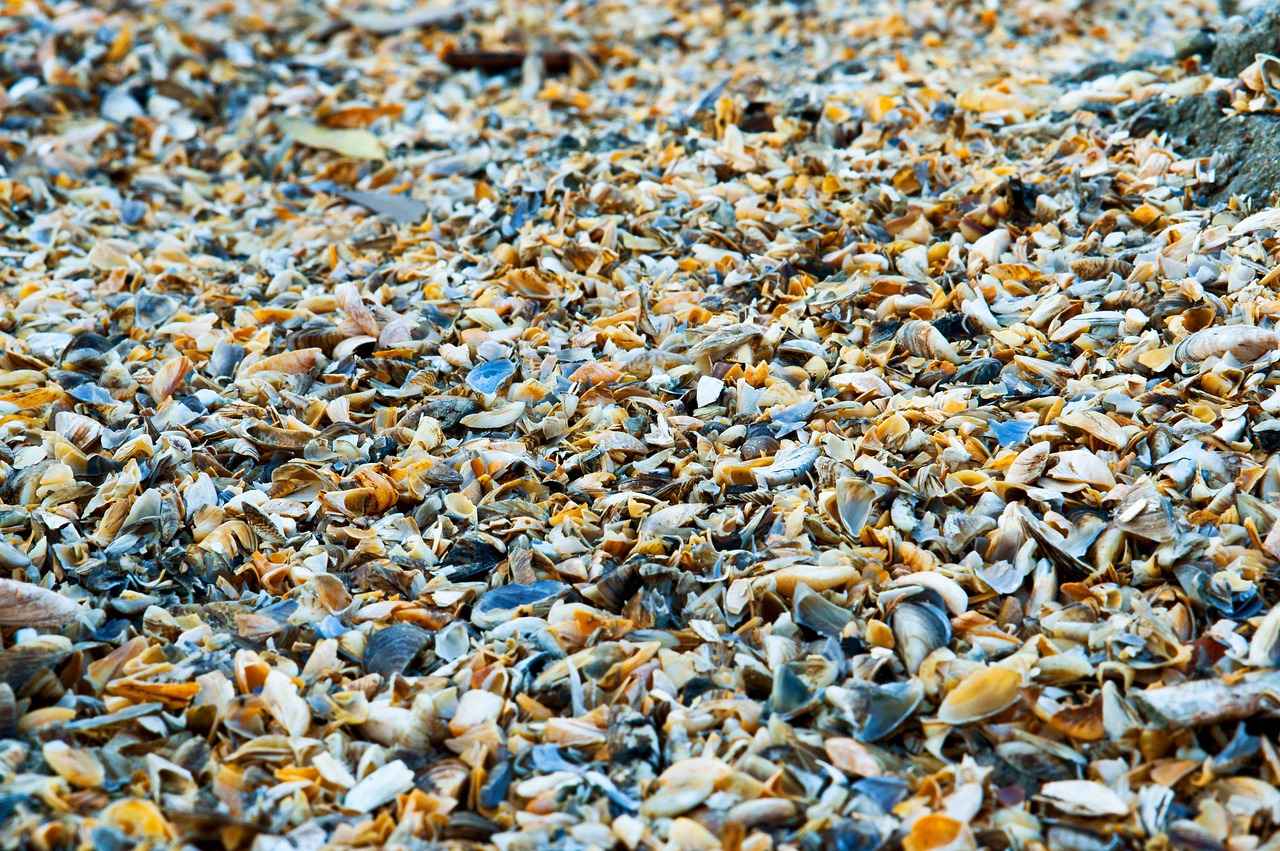This article delves into the optimal washing temperatures for bed linens, ensuring both cleanliness and longevity while addressing common questions and concerns regarding fabric care. Proper washing techniques not only contribute to the hygiene of your bedding but also help preserve the quality of the materials used.
Understanding Fabric Types
Different types of fabrics require specific washing temperatures to maintain their integrity. Knowing the fabric type is essential for selecting the right washing temperature to avoid damage.
Recommended Washing Temperatures
| Fabric Type | Recommended Temperature (°C) |
|---|---|
| Cotton | 40 – 60 |
| Polyester | 30 – 40 |
| Blends | 30 – 40 |
Cotton Linens
Cotton bed linens are favored for their durability and comfort. The recommended washing temperature for cotton is typically between 40°C and 60°C. Using hot water can effectively remove allergens and bacteria, making it beneficial for those with allergies or sensitive skin.
Risks of High Temperatures
While hot water is effective, it can also lead to shrinkage and fading in some cotton fabrics if not used carefully.
Polyester and Blends
Polyester and cotton blends are commonly used for bed linens. Washing them at lower temperatures, around 30°C to 40°C, is generally recommended to prevent damage.
Stains and Pre-Treatment
Pre-treating stains is essential for effective cleaning. Different stains may require different approaches and temperatures for optimal removal.
- Blood and Sweat Stains: For blood and sweat stains, cold water is recommended to prevent setting the stain, followed by a warm wash.
- Food and Drink Stains: Food and drink stains often require warmer temperatures for effective removal. Pre-treating with a stain remover can enhance results.
Using Fabric Softener
Fabric softeners can enhance the feel of bed linens, but their use can also affect washing temperature recommendations. Understanding this balance is crucial for optimal results.
- Benefits of Fabric Softener: Using fabric softener can help reduce static and make linens feel softer, enhancing overall comfort during use.
- Potential Drawbacks: Overuse of fabric softener can lead to buildup on fabrics, potentially affecting their breathability and absorbency.
Environmental Considerations
Choosing the right washing temperature can also have an impact on the environment. Washing linens in cold water can save energy, making it a more environmentally friendly option while still achieving cleanliness. Selecting eco-friendly detergents can further enhance the sustainability of your washing practices.
Conclusion
In conclusion, understanding the best washing temperatures for bed linens is essential for maintaining their quality and longevity. By following the guidelines provided, you can ensure your linens remain fresh and comfortable for years to come.

Understanding Fabric Types
When it comes to maintaining the quality of your bed linens, it is crucial to understand that different fabrics require specific washing temperatures. This knowledge is essential not only for ensuring cleanliness but also for preserving the integrity of the materials. Each fabric type has its own unique characteristics that dictate the best washing practices.
- Cotton: A widely used fabric known for its softness and durability. Cotton bed linens can typically withstand washing temperatures of 40°C to 60°C. This range helps in removing dirt and allergens effectively.
- Polyester: Often blended with cotton, polyester is less absorbent and can be washed at lower temperatures, around 30°C to 40°C. Higher temperatures may lead to damage or fading.
- Linen: This natural fiber is breathable and strong but can shrink if washed in hot water. A temperature of 30°C to 40°C is recommended for linen bed linens.
- Satin: Often made from polyester or silk, satin requires a gentle wash at 30°C to maintain its sheen and texture.
Understanding these fabric types is not just about washing; it’s also about selecting the right products. For instance, using a mild detergent can enhance the cleaning process without causing harm to the fabric. Additionally, opting for cold water washes can be beneficial for delicate fabrics, as it minimizes the risk of shrinkage and fading.
In conclusion, knowing the specific washing temperatures for each type of fabric is vital for maintaining the quality of your bed linens. By following these guidelines, you can ensure that your linens remain fresh, comfortable, and durable for years to come.

Recommended Washing Temperatures
When it comes to maintaining the quality and longevity of your bed linens, understanding the ideal washing temperatures is crucial. Different types of fabrics require specific care to ensure they remain fresh, clean, and intact. This section provides a comprehensive guide on the recommended washing temperatures for various bed linens, allowing you to achieve effective cleaning without risking damage to the fabric.
| Fabric Type | Recommended Washing Temperature | Notes |
|---|---|---|
| Cotton | 40°C to 60°C | Hot water can help eliminate allergens, but be cautious of shrinkage. |
| Polyester | 30°C to 40°C | Lower temperatures prevent fabric damage and fading. |
| Linen | 40°C | Washing at this temperature helps maintain texture and color. |
| Silk | 30°C (hand wash recommended) | Delicate fabrics require gentle care to avoid damage. |
Understanding the Importance of Temperature
Using the correct washing temperature not only ensures cleanliness but also helps in preserving the fabric’s integrity. For instance, washing cotton linens at higher temperatures can effectively remove dirt and allergens, making them ideal for individuals with allergies. However, it is important to note that excessive heat can lead to shrinkage and fading over time.
Eco-Friendly Considerations
Choosing the right washing temperature can also contribute to environmental sustainability. Washing linens in cold water is not only energy-efficient but also gentle on fabrics. Utilizing eco-friendly detergents alongside lower temperatures can enhance cleaning effectiveness while reducing your carbon footprint.
Conclusion
In summary, being aware of the recommended washing temperatures for various bed linens is essential for maintaining their quality and extending their lifespan. By following these guidelines, you can ensure that your linens stay fresh, clean, and comfortable for years to come.
Cotton Linens
Cotton bed linens are widely recognized for their durability and comfort. This natural fabric is not only soft against the skin but also highly breathable, making it an ideal choice for a good night’s sleep. To ensure that your cotton linens remain in excellent condition, it is essential to wash them at the right temperature.
The recommended washing temperature for cotton linens typically falls between 40°C and 60°C. Washing at these temperatures helps to effectively remove dirt and allergens while preserving the fabric’s integrity. Here are some key points to consider:
- Effective Cleaning: Washing cotton at higher temperatures can help eliminate bacteria and allergens, making it a great option for individuals with allergies or sensitive skin.
- Longevity: Maintaining the right washing temperature can prevent premature wear and tear, ensuring your linens last longer.
However, it is important to be aware of the risks associated with high temperatures. While hot water is effective for cleaning, it can also lead to shrinkage and fading in some cotton fabrics. Therefore, it is advisable to:
- Check the care label on your linens for specific washing instructions.
- Consider washing in cold or lukewarm water for less delicate cotton blends.
In summary, washing your cotton bed linens at the appropriate temperature not only enhances their cleanliness but also contributes to their durability and comfort. By following these guidelines, you can enjoy fresh, soft linens that last through many nights of restful sleep.
Benefits of Hot Water
When it comes to washing bed linens, hot water plays a crucial role in maintaining a clean and healthy sleeping environment. The use of hot water can significantly enhance the washing process, particularly for individuals who suffer from allergies or have sensitive skin.
- Effective Allergen Removal: Hot water is highly effective in removing common allergens such as dust mites, pollen, and pet dander. These allergens can accumulate in bed linens, leading to discomfort and allergic reactions. The heat helps to break down and eliminate these particles, ensuring a cleaner sleeping surface.
- Elimination of Bacteria: Using hot water can also kill bacteria and germs that may reside on bed linens. This is especially important for those who are prone to skin irritations or infections. By washing linens in hot water, you are taking an important step towards maintaining hygiene and preventing the spread of harmful microorganisms.
- Enhanced Cleaning Power: Hot water enhances the effectiveness of detergents, allowing them to work more efficiently. The heat helps to dissolve detergent more quickly, leading to a deeper clean. This is particularly beneficial for removing stubborn stains and odors that may linger on fabrics.
- Comfort for Sensitive Skin: For individuals with sensitive skin, washing linens in hot water can help ensure that any potential irritants are thoroughly removed. This is crucial for creating a comfortable sleeping environment, free from allergens and irritants that could exacerbate skin issues.
While the benefits of using hot water are clear, it is essential to be aware of the risks associated with high temperatures. Some fabrics may shrink or fade if exposed to excessive heat. Therefore, it’s vital to check the care labels on your linens and select the appropriate washing temperature that balances cleanliness with fabric care.
In conclusion, utilizing hot water for washing bed linens can provide significant benefits, particularly for those dealing with allergies or sensitive skin. By effectively removing allergens and bacteria, hot water contributes to a healthier and more comfortable sleep environment.
Risks of High Temperatures
When it comes to washing bed linens, understanding the is crucial for maintaining the quality and longevity of your fabrics. While hot water is often seen as a solution for achieving cleanliness, it can pose significant challenges, particularly for cotton fabrics.
Hot water has the ability to effectively remove dirt, allergens, and bacteria, making it a popular choice for many households. However, it can also lead to shrinkage and fading in cotton fabrics if not utilized with caution. This is especially important for those who invest in high-quality linens, as the wrong washing temperature can compromise their integrity.
Cotton bed linens, favored for their comfort and breathability, typically thrive at moderate temperatures. The recommended washing temperature for cotton is generally between 40°C and 60°C. This range effectively balances cleanliness while minimizing the risk of damage. Going beyond this temperature can result in fabric distortion, which is often irreversible.
- Shrinkage: High temperatures can cause cotton fibers to contract, leading to linens that no longer fit your bed properly.
- Fading: Prolonged exposure to hot water can strip away the vibrant colors of your linens, resulting in a dull appearance.
- Wear and Tear: Repeated washing at high temperatures can weaken the fibers, making them more susceptible to tearing and fraying.
To mitigate these risks, it is advisable to follow the care instructions on the label of your linens. If you must use hot water, consider washing them less frequently or mixing them with more durable fabrics that can withstand higher temperatures.
In conclusion, while hot water can be an effective cleaning agent, exercising caution is essential. Understanding the will enable you to maintain the beauty and functionality of your bed linens for years to come.
Polyester and Blends
Polyester and cotton blends are increasingly popular choices for bed linens due to their combination of durability and comfort. These fabrics offer a soft feel while being less prone to wrinkling compared to 100% cotton. However, to maintain their quality, it is essential to wash them at appropriate temperatures.
When it comes to washing polyester and cotton blends, it is generally recommended to use lower temperatures, typically between 30°C and 40°C. This temperature range helps to prevent any potential damage to the fabric, ensuring that your bed linens remain in excellent condition for a longer period. Washing at lower temperatures not only protects the fibers but also reduces the risk of colors fading, which is particularly important for patterned or dyed fabrics.
Another advantage of washing at these lower temperatures is the energy efficiency it offers. Using cold or warm water consumes less energy compared to hot water, making it an eco-friendly choice. This is especially beneficial for those looking to reduce their carbon footprint while still achieving clean and fresh linens.
For optimal results, consider using a gentle detergent specifically formulated for synthetic fabrics. This can enhance the cleaning process while being gentle on the fibers. Additionally, avoid using bleach, as it can weaken the polyester fibers and lead to discoloration.
In conclusion, understanding the best washing practices for polyester and cotton blends is crucial for maintaining the quality and longevity of your bed linens. By washing at lower temperatures and using suitable detergents, you can ensure your linens stay fresh, vibrant, and comfortable for years to come.

Stains and Pre-Treatment
When it comes to keeping your bed linens fresh and clean, pre-treating stains is crucial for effective cleaning. Different types of stains not only vary in their composition but also in the methods needed for their removal. Understanding the nature of each stain can significantly enhance your cleaning efforts and prolong the life of your linens.
| Type of Stain | Recommended Pre-Treatment | Optimal Washing Temperature |
|---|---|---|
| Blood and Sweat | Soak in cold water with a gentle detergent | Warm wash (30°C to 40°C) |
| Food and Drink | Apply a stain remover and wash immediately | Warm to hot wash (40°C to 60°C) |
| Grease and Oil | Use a dish soap to break down grease | Warm wash (40°C) |
| Ink | Apply rubbing alcohol before washing | Cold wash (30°C) |
Understanding Stain Types
- Blood and Sweat: These stains are best treated with cold water to avoid setting. After soaking, a warm wash can help lift any remaining residue.
- Food and Drink: Stains from food or beverages often require a warm wash. Pre-treating with a stain remover can significantly improve the chances of complete stain removal.
- Grease and Oil: For greasy stains, using a small amount of dish soap directly on the stain can help break it down before washing.
- Ink: Ink stains can be particularly stubborn. Applying rubbing alcohol can help dissolve the ink before washing in cold water.
In conclusion, taking the time to pre-treat stains appropriately is essential for maintaining the quality and appearance of your bed linens. By understanding the nature of different stains and applying the correct methods and temperatures, you can achieve optimal cleaning results.
Blood and Sweat Stains
can be particularly challenging to remove from bed linens, but with the right approach, you can effectively tackle these stubborn marks. It’s essential to act quickly when dealing with such stains to avoid permanent setting.
When it comes to cleaning blood and sweat stains, the first step is to use cold water. Cold water is crucial because it helps to prevent the stain from setting into the fabric. Hot water can cause proteins in blood to coagulate, making the stain more difficult to remove. By rinsing the stained area with cold water, you can dilute the stain and prepare it for further treatment.
After rinsing with cold water, it’s advisable to apply a gentle stain remover or a mixture of laundry detergent and water directly to the stain. Allow this solution to sit for about 5 to 10 minutes to give it time to break down the stain. Once this pre-treatment is complete, you can wash the linens in warm water, typically around 40°C to 60°C, depending on the fabric type. This temperature range is effective for removing residual stains while still being safe for most bed linens.
For optimal results, consider the following tips:
- Always check the care label on your linens for specific washing instructions.
- Test any stain remover on a small, inconspicuous area first to ensure it doesn’t damage the fabric.
- For particularly stubborn stains, repeat the cold water rinse and warm wash process as necessary.
In conclusion, addressing blood and sweat stains promptly and effectively requires a combination of cold water rinsing and warm washing. Following these steps will help maintain the integrity of your bed linens while ensuring they remain clean and fresh.
Food and Drink Stains
can be particularly challenging to remove from bed linens, requiring specific techniques and temperatures for effective cleaning. Understanding how to tackle these stains not only helps in maintaining the appearance of your linens but also extends their lifespan.
When it comes to removing food and drink stains, the temperature of the water used during washing plays a crucial role. Warmer temperatures can significantly enhance the effectiveness of stain removal. For instance, washing linens in warm water, typically around 40°C to 60°C, can help break down the proteins and sugars found in many food and beverage stains.
Pre-treating stains is another essential step in the cleaning process. Applying a stain remover directly to the affected area before washing can lead to better outcomes. This pre-treatment process allows the stain remover to penetrate the fabric and loosen the stain, making it easier to wash away. It is recommended to let the stain remover sit for at least 5 to 10 minutes before laundering.
In addition to temperature and pre-treatment, it’s vital to consider the type of fabric. For example, delicate fabrics may require a gentler approach, such as using cold water initially to avoid setting the stain. However, for more durable fabrics like cotton, utilizing warmer water can yield excellent results.
Ultimately, the combination of warm washing temperatures and effective pre-treatment can lead to successful removal of food and drink stains, ensuring your bed linens remain fresh and clean. Always remember to check the care label on your linens for specific washing instructions to avoid any damage.
In conclusion, addressing food and drink stains promptly with the right techniques can make all the difference in maintaining the quality and appearance of your bed linens.

Using Fabric Softener
is a common practice among those who want to enhance the feel of their bed linens. While fabric softeners can make your sheets feel softer and more luxurious, it is important to understand how their use can influence washing temperature recommendations. This balance is crucial for achieving optimal results in both cleanliness and fabric longevity.
When selecting a fabric softener, it’s essential to consider the type of fabric your bed linens are made from. Different materials react differently to softeners. For example, cotton linens may benefit from softeners, making them feel fluffier and more comfortable. However, using fabric softeners on certain synthetic blends can lead to a buildup that diminishes their breathability.
Benefits of Fabric Softener
- Softness: Fabric softeners are designed to coat fibers, providing a softer touch that enhances the overall comfort of your linens.
- Static Reduction: They help reduce static cling, making it easier to fold and manage your bed linens.
- Fragrance: Many fabric softeners come with pleasant scents that can leave your linens smelling fresh and inviting.
Potential Drawbacks
- Buildup: Overuse of fabric softeners can lead to residue accumulation on fabrics, which may affect their absorbency and breathability.
- Washing Temperature: The use of fabric softeners often requires adjustments in washing temperatures. For optimal results, washing linens at lower temperatures may be necessary to prevent damage to the softener’s effectiveness.
In conclusion, while fabric softeners can significantly improve the feel of your bed linens, it is crucial to use them wisely. Understanding the fabric type and adjusting washing temperatures accordingly will ensure that your linens remain comfortable and in good condition over time. By striking the right balance, you can enjoy the benefits of both cleanliness and softness.
Benefits of Fabric Softener
Fabric softeners are a popular addition to laundry routines, providing a range of advantages that enhance the quality of bed linens. Understanding these benefits can help you make informed choices about your laundry practices.
- Softness: One of the primary benefits of using fabric softener is the increased softness it imparts to linens. This makes your bedding more comfortable and inviting, enhancing your sleep experience.
- Static Reduction: Fabric softeners effectively reduce static cling, which is particularly beneficial for bed linens. This means less annoyance when changing sheets or making the bed.
- Wrinkle Prevention: By coating the fibers of your linens, fabric softeners help to minimize wrinkles. This not only keeps your bedding looking fresh but also reduces the time spent on ironing.
- Fresh Fragrance: Many fabric softeners are infused with pleasant scents that can leave your linens smelling fresh and clean. This aromatic touch can significantly enhance your overall sleep environment.
- Improved Durability: Using fabric softener can help maintain the integrity of the fabric by reducing friction during washing and drying. This can lead to longer-lasting linens that retain their quality over time.
While the benefits of fabric softener are numerous, it is important to use it judiciously. Overuse can lead to a buildup on fabrics, which may affect their breathability and absorbency. Therefore, it is advisable to follow the manufacturer’s recommendations for use.
In conclusion, incorporating fabric softener into your laundry routine can significantly enhance the comfort and longevity of your bed linens. By understanding its benefits and using it appropriately, you can enjoy a more pleasant sleeping experience.
Potential Drawbacks
While fabric softeners can enhance the texture and fragrance of bed linens, their overuse can lead to several that may compromise the quality and functionality of fabrics.
- Buildup on Fabrics: Over time, excessive use of fabric softener can result in a sticky residue on linens. This buildup can hinder the fabric’s natural properties, affecting its breathability and absorbency. As a result, sheets may feel less comfortable and may not wick away moisture effectively, leading to discomfort during sleep.
- Impact on Performance: The residue left by fabric softeners can interfere with the moisture-wicking capabilities of certain fabrics, particularly those designed for athletic or high-performance use. This can be detrimental for individuals who rely on these materials for optimal temperature regulation.
- Allergies and Sensitivities: Some individuals may experience allergic reactions or skin sensitivities to the chemicals used in fabric softeners. Symptoms can include skin irritation, rashes, or respiratory issues, particularly in those with pre-existing conditions.
- Environmental Concerns: Many fabric softeners contain synthetic fragrances and chemicals that can be harmful to the environment. When washed down the drain, these substances can contribute to water pollution and may have adverse effects on aquatic life.
In conclusion, while fabric softeners can provide immediate benefits such as softness and static reduction, it is crucial to use them in moderation. Understanding the potential drawbacks can help you make informed choices about fabric care, ensuring your linens remain comfortable and functional.

Environmental Considerations
When it comes to maintaining bed linens, one of the most significant factors to consider is the impact of washing temperatures on the environment. Eco-friendly practices not only contribute to a healthier planet but also promote longevity and cleanliness of your linens.
Choosing the right washing temperature can significantly reduce energy consumption, which is a crucial aspect of sustainable living. By making informed decisions, you can ensure that your laundry practices are both effective and eco-conscious.
Washing linens in cold water is one of the most effective ways to save energy. It is estimated that about 90% of the energy used in washing clothes goes towards heating the water. By opting for lower temperatures, you can minimize your carbon footprint while still achieving satisfactory cleanliness. Additionally, many modern detergents are formulated to work effectively in cold water, making this choice both practical and environmentally friendly.
Selecting eco-friendly detergents is another vital step in promoting sustainability. Many conventional detergents contain harsh chemicals that can harm aquatic ecosystems when washed down the drain. By choosing biodegradable and plant-based alternatives, you can ensure that your washing practices are not only effective but also safe for the environment. Look for certifications such as Green Seal or EcoLogo when selecting your laundry products.
Another way to lessen your environmental impact is by reducing the frequency of washing bed linens. Unless they are visibly soiled or have absorbed odors, washing linens every week may be unnecessary. Extending the time between washes can save both water and energy, making your laundry routine more sustainable.
In conclusion, understanding the environmental considerations when washing bed linens is essential for promoting sustainable practices. By opting for cold washes, selecting eco-friendly detergents, and reducing wash frequency, you can significantly contribute to a healthier planet while maintaining the quality and freshness of your linens.
Energy Efficiency
is a crucial aspect of modern laundry practices, particularly when it comes to washing bed linens. In today’s world, where environmental concerns are at the forefront, making conscious choices about how we wash our linens can significantly contribute to sustainability efforts.
One of the most effective ways to enhance is by opting to wash linens in cold water. This practice not only conserves energy but also contributes to a more environmentally friendly household. When linens are washed in cold water, the energy required to heat the water is drastically reduced, leading to lower electricity bills and a reduced carbon footprint.
Furthermore, washing in cold water can still achieve the desired level of cleanliness. Many modern detergents are formulated to work effectively in cold water, ensuring that dirt, allergens, and bacteria are effectively removed without the need for high temperatures. This is particularly beneficial for individuals with sensitive skin or allergies, as hot water can sometimes exacerbate these issues.
Additionally, washing linens in cold water helps preserve the integrity of the fabric. High temperatures can lead to shrinkage, fading, and wear over time. By choosing cold water, you not only save energy but also extend the lifespan of your linens, making it a win-win situation.
It’s also worth noting that certain stains, such as blood or sweat, should be treated with cold water first to prevent setting the stain. Following this, a warm wash can be used for effective cleaning. This two-step approach maximizes both stain removal and energy efficiency.
In conclusion, washing bed linens in cold water is a simple yet effective method to enhance energy efficiency while maintaining cleanliness. By making this small adjustment in your laundry routine, you can contribute positively to the environment and care for your linens at the same time.
Detergent Choices
play a crucial role in the effectiveness of your laundry routine, especially when it comes to maintaining the sustainability of your washing practices. By opting for eco-friendly detergents, you not only ensure that your clothes are cleaned effectively but also contribute positively to the environment.
Eco-friendly detergents are formulated with biodegradable ingredients that break down naturally, reducing the impact on water systems and ecosystems. These products often avoid harsh chemicals, making them safer for both the environment and your skin. Here are some key factors to consider when selecting the right detergent:
- Ingredients: Look for detergents that contain plant-based surfactants and are free from phosphates, dyes, and synthetic fragrances.
- Packaging: Choose brands that use recyclable or minimal packaging to further reduce waste.
- Concentration: Highly concentrated detergents require less product per load, which can lead to less packaging waste and a more efficient wash.
Using eco-friendly detergents can also enhance the longevity of your fabrics. Traditional detergents may contain harsh chemicals that can degrade fibers over time, leading to wear and tear. In contrast, eco-friendly options are gentler, helping to preserve the quality of your bed linens and clothing.
Moreover, many eco-friendly detergents are designed to work effectively in cold water, which is not only better for your fabrics but also energy-efficient. Washing with cold water can significantly reduce your energy consumption, making it a win-win for both your wallet and the planet.
In conclusion, selecting eco-friendly detergents is a vital step in enhancing the sustainability of your laundry practices. By making informed choices, you can achieve effective cleaning while minimizing your environmental footprint.

Conclusion
In summary, it is crucial to grasp the optimal washing temperatures for bed linens to ensure their durability and comfort. By adhering to the recommended guidelines, you can maintain the freshness of your linens while also enhancing their lifespan. Proper care not only keeps your bed linens looking their best but also contributes to a healthier sleeping environment.
When washing your bed linens, consider the fabric type first. For instance, cotton linens thrive at temperatures between 40°C and 60°C, effectively removing allergens and bacteria. However, it’s essential to be cautious with high temperatures, as they can lead to shrinkage or fading. On the other hand, polyester blends should be washed at lower temperatures, ideally between 30°C and 40°C, to prevent damage.
Additionally, addressing stains promptly can make a significant difference. For blood and sweat stains, using cold water initially is recommended to avoid setting the stain, followed by a warm wash. Conversely, food and drink stains often require warmer temperatures for effective removal.
Furthermore, the use of fabric softeners can enhance the texture of your linens, making them feel softer and more comfortable. However, it’s wise to use them sparingly to prevent buildup that can affect the fabric’s breathability.
Finally, considering environmental factors is increasingly important. Washing in cold water not only conserves energy but also aligns with eco-friendly practices. By choosing sustainable detergents, you can further minimize your ecological footprint while ensuring your linens remain clean and fresh.
By implementing these practices, you can ensure that your bed linens remain in excellent condition, providing you with a comfortable and inviting sleeping space.













